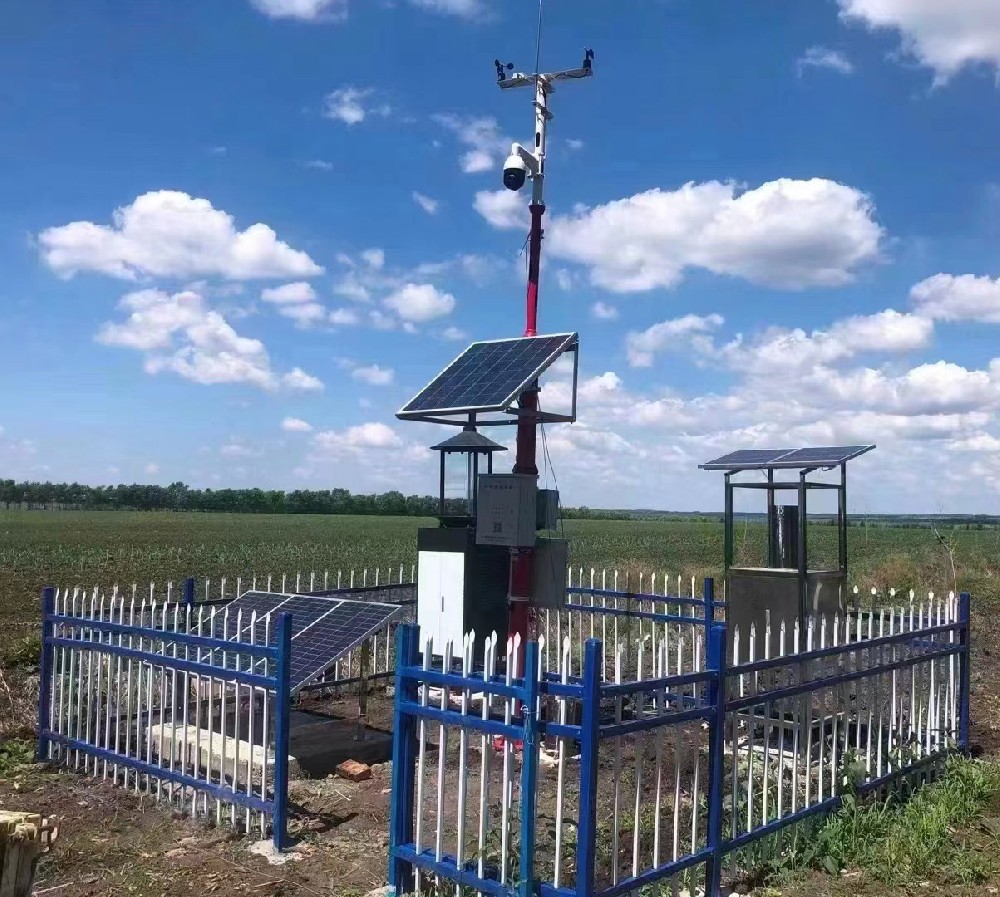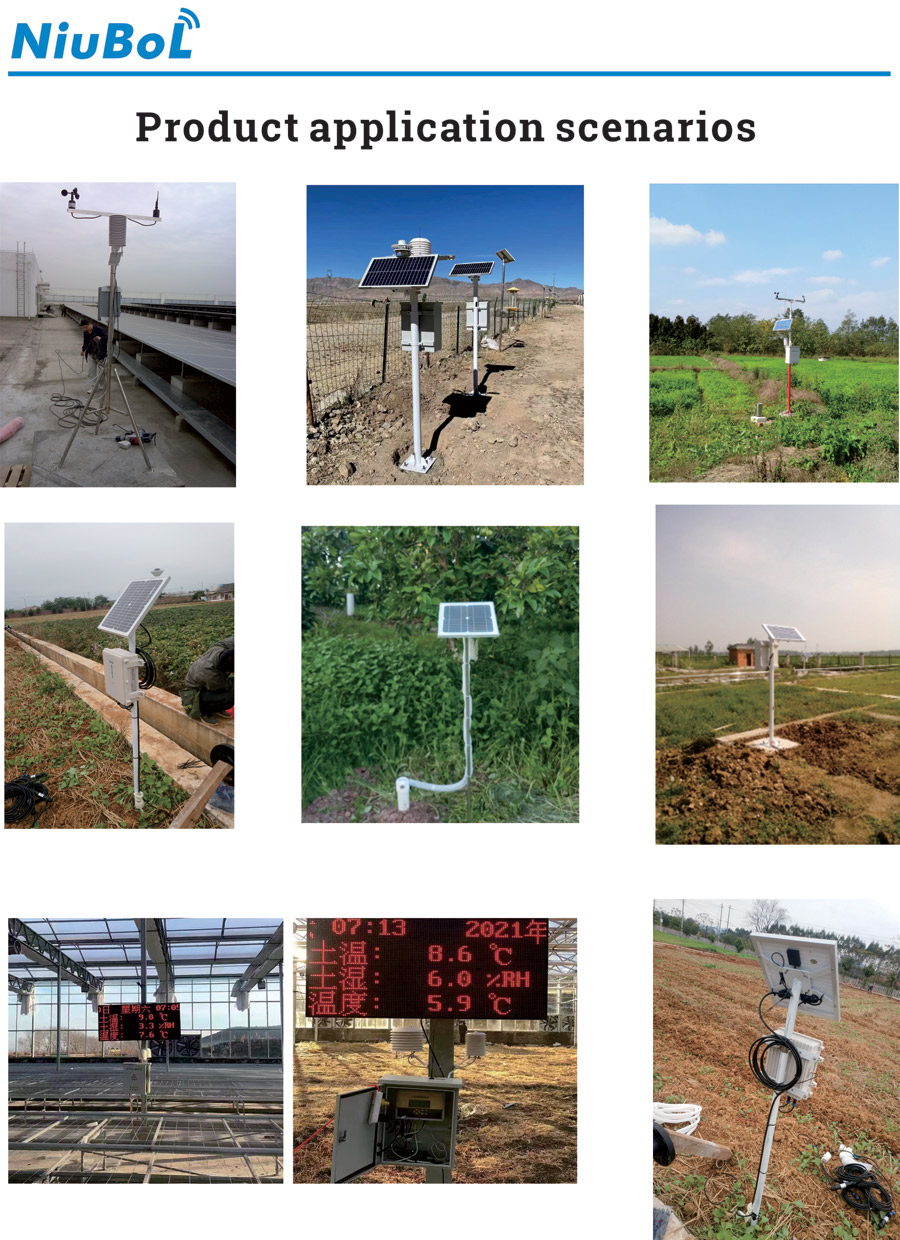

— Blogs —
—Products—
 Consumer hotline +8618073152920
Consumer hotline +8618073152920 WhatsApp:+8615367865107
Address:Room 102, District D, Houhu Industrial Park, Yuelu District, Changsha City, Hunan Province, China
Technical Support
Time:2024-05-18 15:55:25 Popularity:2124
First, Preface
Agricultural automatic weather station is a weather monitoring system specially designed for agricultural production, which can automatically collect and record weather data near farmland. By using an automatic agricultural weather station, farmers and managers can more accurately understand changes in the farmland environment, predict weather events, optimize irrigation schedules, rationalize farming activities, reduce resource wastage, and improve crop yield and quality.
Second, the components of agricultural automatic weather station
Agricultural automatic weather station usually includes the following components:
1. sensor: used to monitor various meteorological parameters, such as temperature, humidity, wind speed, precipitation, sunshine hours, soil moisture, etc.
2. data logger: used to store the data collected by the sensors.
3. communication system: to transmit data from the field to the data center or farmers' computers and mobile devices.
4. software platform: used to analyze the data and provide weather forecasts and farming advice.
In order to ensure proper functioning of the agrometeorological station and accuracy of the data, proper installation steps are crucial. This guide will provide you with the installation steps and precautions for the Agricultural Weather Station.
1. Site planning: Choose a location that is representative of the meteorological situation of the entire agricultural park, make sure the location is far away from obstructions such as trees, buildings, etc., and keep it relatively smooth to avoid human relocation.
2. Prepare the foundation: according to the requirements of the equipment, deal with the foundation of the installation location, make sure the thickness of the hardened ground is not less than 15cm, and the diameter and spacing of the expansion bolts are in accordance with the requirements of the equipment. For users of pre-buried cages, they should refer to the equipment construction manual for operation.
3. Equipment assembly: according to the equipment manual or installation video, assemble the riser, install the equipment box, sensor crossbar and other components to ensure that each component is firmly and accurately installed.
4. Sensor installation: correctly install the temperature, humidity, precipitation, wind speed and direction sensors, pay special attention to the wind direction sensor notch marking should be pointing due north.
5. Power supply system connection: Ensure that the weather station can be continuously and stably supplied with power, follow the instruction manual of the equipment or consult the manufacturer's instruction when connecting the power supply system.
6. Data Transmission System Connection: If it is necessary to transmit the meteorological observation data to the central database or scientific research platform, choose the appropriate data transmission method (wired or wireless) and make sure the connection with the weather station system is normal.
7. System debugging and testing: After the installation is completed, carry out a comprehensive test and calibration to ensure that the weather station can accurately measure and record various meteorological data. If necessary, make necessary adjustments and calibrations.
8. Maintenance and servicing plan: Establish a regular maintenance and servicing plan, including equipment inspection, cleaning and calibration, etc., to ensure the long-term stable operation of the weather station and the accuracy of the data.
Precautions for installation of agrometeorological stations:
1. follow the equipment manual or installation video to ensure that each step is accurate.
2. Check that all connections are secure to ensure stable operation of the weather station.
3. install lightning protection in sensitive areas to protect the weather station from lightning.
4. for complex weather station systems, installation and commissioning by specialized personnel may be required.
5. Avoid damage to the sensors during installation to ensure the accuracy of the sensors.
Fourth. daily maintenance steps for agricultural weather station:
1. Regular Inspection: Set up a schedule for regular inspection and conduct a comprehensive inspection at least once a month. The inspection includes whether the sensors, data collectors, power lines, transmission lines, etc. are normal, and whether the overall structure of the weather station is solid.
2. Cleaning: Clean sensors and equipment housings regularly to remove dust and possible contaminants. Avoid using cleaning agents that may cause damage and ensure that the sensors are reinstalled correctly after cleaning.
3. Calibrate the sensors: Calibrate the temperature, humidity, wind speed and direction sensors according to the calibration intervals recommended in the device manual. Calibration usually requires the use of a specialized calibration tool or instrument.

4. Check the power supply: Ensure that the weather station has a stable power supply, check whether the power cord and plug are damaged and replace them if necessary. For solar-powered weather stations, check the condition and cleanliness of the solar panels.
5. Data Monitoring: Check weather data records regularly to ensure normal data transmission. For abnormal or missing data, investigate and deal with them in time.
6. Lightning Protection Measures: Before the thunderstorm season, check whether the lightning protection facilities are intact to ensure that the weather station is free from lightning.
7. Software update: If there is a new software version released, update the data collector and analysis software of the weather station in time to get the best performance and new functions.
8. Record maintenance logs: Record in detail the time, content and related issues of each maintenance so as to track and analyze the operation status of the weather station.
9. Training and instruction: For farmers or maintenance personnel, provide the necessary training to ensure that they understand how to perform basic routine maintenance and troubleshooting.
10. Seek professional help: When encountering complex technical problems, promptly contact the equipment manufacturer or a professional maintenance service provider for assistance.

Please follow the above guidelines and precautions for the installation of the agrometeorological station to ensure its proper operation and data accuracy. If in doubt, please refer to the equipment manual or consult the manufacturer. We wish you a smooth installation!
Related recommendations
Sensors & Weather Stations Catalog
Agriculture Sensors and Weather Stations Catalog-NiuBoL.pdf
Weather Stations Catalog-NiuBoL.pdf
Related products
 Combined air temperature and relative humidity sensor
Combined air temperature and relative humidity sensor Soil Moisture Temperature sensor for irrigation
Soil Moisture Temperature sensor for irrigation Soil pH sensor RS485 soil Testing instrument soil ph meter for agriculture
Soil pH sensor RS485 soil Testing instrument soil ph meter for agriculture Wind Speed sensor Output Modbus/RS485/Analog/0-5V/4-20mA
Wind Speed sensor Output Modbus/RS485/Analog/0-5V/4-20mA Tipping bucket rain gauge for weather monitoring auto rainfall sensor RS485/Outdoor/stainless steel
Tipping bucket rain gauge for weather monitoring auto rainfall sensor RS485/Outdoor/stainless steel Pyranometer Solar Radiation Sensor 4-20mA/RS485
Pyranometer Solar Radiation Sensor 4-20mA/RS485
Screenshot, WhatsApp to identify the QR code
WhatsApp number:+8615367865107
(Click on WhatsApp to copy and add friends)
